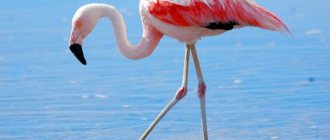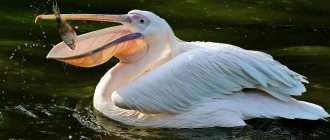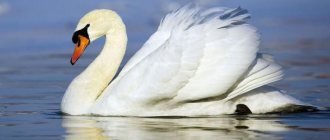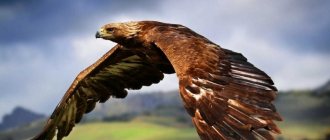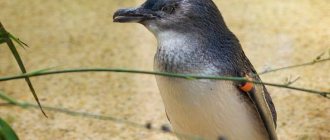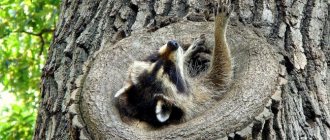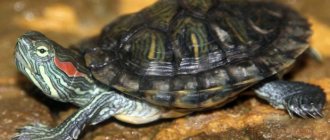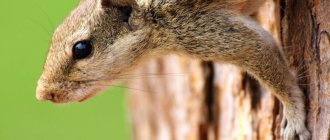Tit bird: types, names, photographs of great tit, long-tailed tit, tufted tit, Muscovy tit, puffy tit
The tit is perhaps familiar to each of us, because this bird comes into view more often than many others. Fragile little playful birds jumping from branch to branch - this is exactly how most people imagine a titmouse. However, few people realize that there are a huge number of species of these birds and, seeing many other beautiful birds around us, we do not even suspect that they are also titmouses.
- The tit family, in general, boasts about 65 species of small birds, the mass of which usually does not exceed 25 g, and the body length is most often 150 mm
- This bird lives not only in our latitudes, it is also common in almost all corners of our world
- The most common types of tits include the following: great tit, hanging tit, whiskered tit, tufted tit, blue tit, coal tit, powder tit, Apollo tit.
Now let's talk in more detail about each of the above species of this family.
- Let's start, perhaps, with the great tit, also known as the great tit or grasshopper. This type of titmouse is very beautiful. The back of this bird is light green with yellow tints, the belly is yellow. This bird's distinctive black feature is a black stripe that runs along its belly and chest. The upper part of the head, the sides of the neck, and the neck of this titmouse are painted black, which gives off a bluish sheen in the sun. The sides of the titmouse's head are white. The wings of the large fish are gray, sometimes with a blue tint, and the tail is black.
Great tit
- Hanging tit. The hanging titmouse is the smallest representative of the tit family, because its wing length reaches only 45-55 mm.
- Unfortunately, this tit cannot boast of its color. The bird's body is colored yellowish-gray, giving off greenish in places; overall, this color looks very inconspicuous and inconspicuous.
- Most often this bird can be seen in South-West or South Africa.
- Whiskered tit. Very often, whiskered tits can be found under the name of bearded tit or bearded tit, and all because the adult male of this species has a white throat and a black “beard”. The plumage of these birds has a very beautiful color of light brown, in places with a yellowish tint. The head of the mustachioed tit is colored gray with a blue tint. A distinctive feature of the tail color of these birds (males) is that the tail feathers below are white.
- The female tit does not have a “beard”; its head is colored a warm brown-beige color. The tail feathers below are not white, but beige, milky. Young immature whiskered tits have a color that is close in color to warm beige and yellow.
Whiskered Tit
- Tufted tit. The tufted tit, or as it is also called the grenadier, is a beautiful and interesting bird. A distinctive feature is its crest, which is impossible not to notice even from a distance. It is not difficult to guess that this bird received its name precisely because of the presence of this crest. The entire back of the grenadier is painted in a grayish, brownish color. The crest is colored with small black and white spots, the throat and sides of the neck have black spots. The belly of the tufted tit is white with a yellow tint.
Tufted tit
- Blue tit. Here we come to the description of the most beautiful bird of the tit family. The blue tit has a very unusual bright color, which definitely sets it apart from other birds. The blue tit is a small bird whose plumage is bright blue and yellow. The tit's beak and tail are relatively small; the blue tit itself reaches a length of 10-12 cm. The dorsal part of the tit is colored greenish, but the shade may differ depending on the bird's habitat. The bird's belly is light green with a yellow tint. The blue tit has an azure-colored “cap” on its head, two blue stripes on both sides of its beak, and a blue stripe around its neck. The wings and tail of the bird also have a bluish-blue color.
Blue tit
- Moskovka. This bird can be found under the name black tit, small tit. This bird is reminiscent of a large bird in its color, however, it is significantly smaller in size. The “cap” on the head of the Muscovy is black, the “cheeks” have white spots, the back of the bird is gray with a bluish tint, and the belly and chest are light gray with a light reddish tint. The tail and wings are painted dirty black.
Moskovka
- Puffy . The chickadee is also called the chickadee and marsh tit. This bird does not have a bright, attractive color. The back of the head and the head of this tit are colored black. The back and the entire upper part of the body are distinguished by a light gray color; the abdomen also has a nondescript dirty white color. The wings and tail are most often dark brown.
Puffy
- Apollonovka. The long-tailed tit, also called the Apollo tit, is the smallest bird of all the tits that live in our area. Despite the fact that the Apollo tit is the smallest tit, it boasts a very long and beautiful tail. The head and belly of the long-tailed tit are painted white, the sides of the bird have a barely noticeable pink tint, the wings are most often dark brown or black, and the stepped tail is brown-black.
MAKING A REGULAR TIMBER WITH YOUR OWN HANDS
To make it you will need:
- Jigsaw or circular saw. But a hand hacksaw can also do the job easily if it’s sharp. Drill or screwdriver. Sander with P60 sandpaper.
Little things:
Attention! Dimensions of blanks for titmouse in millimeters.
- A. Ruler
- V. Pencil
- C. Square, with the ability to draw an angle of 45 degrees.
- D. A chisel or a very sharp knife that does not bend
- E. Wood drill diameter 3
- F. Wood drill diameter 6
- G. Forstner drill diameter 35. A tit may not fit through a diameter of 30. For a flycatcher, you can have a diameter of 30. More than 40 mm. no need to do it!
- H. Furniture dowel diameter 6-2 pcs. (you can do without. It is for decorative purposes)
- I. Small carnations 15 -20 -4 pcs.
- J. Yellow self-tapping screw 3?35- 22 pcs. Definitely like this! It can be longer, but not thicker. Why? I'll tell you below.
- Awl.
- Glue. For example Titebond II or Moment Joiner D3
- Hammer.
- Oil for processing (Optional!) I will write the types of oil and impregnation at the end.
Material for titmouse:
I recommend not making a house out of oak boards. It looks beautiful, but how does oak parquet behave when wet? If you don't secure the birdhouse made of oak with a steel rim, it will become a leaky veranda.
Conifers, pine, spruce, larch, cedar, all are perfect.
One board 1.5 meters long. I bought a width of 130 and a thickness of 20mm. Accordingly, I write the dimensions based on this parameter. I sawed the blanks to the following sizes:
- A. Width 130 length 230 – 2 pcs. – front and back wall
- B. Width 100 length 160 – 2 pcs. side walls
- C. Width 130 length 180 – 2 pcs. roof
- D. Piece to the bottom 100?100
- E. Plywood thickness 6 on the false bottom. Any thickness is possible. from 4 to 12. Rectangle 140?160
- F. A small piece of 6 plywood for the leaf. Whatever shape and length you want.
On two blanks (pos. A) mark the middle. In this case, 65. From it, using a square, draw lines at an angle of 45°
We mark the holes for the entrance and perch. From the base to the center of the tap hole 160, make a hole with a forstner drill, diameter 35. From the base to the perch 110 – hole diameter 6.
We cut off the marked corners and drill mounting holes; for self-tapping screws, the diameter of 3 holes should be made at a distance of 8-9 mm. from the edge of the wall. The height is arbitrary.
We make notches on the inside of the front wall of the titmouse. We just scratch it with a chisel. Up to half the wall, below it makes no sense. Birds will cover the house halfway with sticks and leaves up to half the height. Then we twist the body of the bird house, having previously glued it. Self-tapping screw 3x35. We recess the caps by 5 mm.
ASSEMBLY A BIRD HOUSE
We cut the dowels and plug the holes with glue. Sand with P60 - P80 sandpaper on all sides. You can use your hands using cloth sandpaper.
Next, we apply one part of the roof to another, as in the picture. We saw off along the line. The result was two parts of the roof. One is 130?180 as it was, and the second is 110?180. As shown in the figure, draw a line at a distance of 9 mm. from the edge and drill holes at a distance of 30 - 40 from each edge.
On the house we measure the distance for the holes on the roof. The first is 9, and the second is 126 mm. from one edge.
Mark as shown below and drill diameter 3.
We twist the roof of the titmouse. Glue is a must! If you press hard on the screwdriver with your hand, the cap will easily sink into the bottom of the house.
Mark the holes on the plywood. The wooden bottom (pos. E) must be adjusted to the house. Its size should be slightly smaller. When wet, the titmouse increases in size and if you make the bottom end-to-end, it will not come off later. We place the bottom on the plywood so that there is an equal distance to the holes on all sides.
Turn over and nail with small nails.
LET'S MAKE THE TIMBER BEAUTIFUL!
Now a perch for birds. You can insert an ordinary stick, but I decided to get a little creative) On the plywood (pos. F) I drew a leaf with a small tail. This tail was sanded to a cone so that it fits into a hole of diameter 6 by hand. And painted it green.
Treated with tung oil. You can use sauna oil, linseed oil, teak oil. The main thing is to dry. You can paint the titmouse with paint and coat it with an antiseptic. It all depends on your views on what a do-it-yourself titmouse should be like.
Insert the leaf and you're done! You made a titmouse with your own hands. The birds will be happy with their new house.
It is advisable to make a bird house in April. Flycatchers arrive in June, redstarts later. The titmouse will have time to weather and gain natural moisture. It should be hung at a height of 2-2.5 meters from the ground. You can hang a titmouse on the wall of your house. The birds are quite brave and settle next to a person quite calmly. Hang and watch the chicks.
Tit: a bird of prey, a migratory bird or not?
First, let's talk about whether the titmouse is a migratory bird. In order to understand this issue, you need to understand why some birds fly away at a certain period of time, while others remain in their homeland.
- The first reason why birds fly away to other habitats is the lack of food. For example, most birds that fly away eat insects and other various foods of animal origin. As you understand, in winter it is extremely difficult to find such food, even if it is possible, and in order to survive in the cold, birds need a lot of food
- The second reason is the cold. Here the animal is completely powerless, because it is naturally not able to change the weather
As for tits, most of them are nomadic birds, because with the onset of cold weather they move from the forests closer to humans. In winter, there is very little food in the forest, so birds move to people in the hope of finding something edible and thus ensuring a “well-fed” winter. Tits are not migratory birds, as they are not particularly sensitive to cold.
Tits are nomadic birds
Now let's talk about the nutrition of these birds:
- Generally speaking, birds of prey are those that hunt in flight and have a body structure that facilitates this, for example, a sharp beak and large claws. It’s clear that our little titmice don’t fit this description.
- It is more appropriate to classify tits as insectivorous birds, since they most often feed on various larvae, forest pests, beetles, spiders, butterflies, and dragonflies. In winter, he consumes more plant foods, since it is very difficult to find insects at this time.
- It would seem that everything is clear, the tit is an exclusively insectivorous bird, but there is one “but”. Scientists have proven that some species of tits sometimes hunt pipistrelle bats (small bats); as a rule, they hunt them at a time when the mice have not yet fully awakened from hibernation. Having killed its prey, for example, a great tit, pecks out its brain
Characteristics and behavior of tits: description for children
Tits most often appear to us as active, fast, restless birds, and this is what they really are.
- The hanging titmouse is a very quiet bird that always behaves neatly and silently. Despite this, she is very dexterous in her movements: she can very quickly and quietly inspect tree branches and flowers, in which she looks for bugs for food.
- The long-tailed tit is very sociable and is rarely very afraid of people, so very often you can find such a bird living in someone’s house. Apollonovka differs from many other birds in that it can sing very beautifully. That is why poultry farmers who want to teach other birds to sing take the long-tailed tit as a teacher.
Titmouse
- Blue tits are frisky, active birds that love to jump from branch to branch, while hanging from the branch upside down from time to time. This titmouse is not very afraid of people, so it can often be seen near residential buildings. By nature, the blue tit is not a very good flyer, but uses its legs to move very quickly. This bird can also be called curious, as it loves to “stick its nose” into any crack or hole in the tree.
- The great tit is a very fast, mobile bird. Loves to jump on branches, hanging upside down from them. The great tit flies well, but in order to fly, it flaps its wings frequently. Most often, such a bird can be seen in a flock with other tits.
- The Muscovite is a restless bird that will never sit in one place for a long time. The titmouse flies quickly and well, and while searching for food it also hangs upside down by branches.
- The tufted tit also boasts of its activity and restlessness. Most often it can be seen in the crown of trees, where the bird hides from prying eyes.
As you can see, all titmice are very mobile and active birds, which rarely just sit on tree branches.
Drawing tools
A drawing of a tit with children can be made using various artistic techniques; the main thing is to prepare the required amount of materials and tools before work.
Namely:
| Affiliation | Description |
| Paper | It will act as a canvas for creating a drawing. |
| Simple pencil | It will be used to create outlines in the early stages |
| Eraser | Necessary for removing unnecessary lines |
Some drawings can only be done with a simple pencil. If you need to add color to the images, you should use colored pencils or paints.
Available for purchase:
- watercolor;
- pastel;
- gouache.
Paper
For drawing you can use:
- sheets from the album;
- small sketchbooks;
- office paper.
Before purchasing any of them, it is worth deciding what tools and materials will be used to create a tit drawing. For example, if you plan to work with watercolors, you will need special watercolor paper.
Instead, you can buy other high-density drawing paper. Its indicator should not be less than 250 g per 1 sq. m. You can also use thick Whatman paper.
Pencils
In art supply stores you can see many sets of simple pencils. They differ in cost and quantity included. There is no need for a beginner to purchase the entire set. Most often, 2-3 simple pencils are enough.
It is recommended to prepare 1 hard and 1 soft pencil, each of which has its own advantages over each other.
Solid types are marked with the Latin letter “H” or the Russian letter “T”. A beginner should purchase a tool marked “H” or “2H” (respectively, “T” or “2T”). If the numbers opposite the letter “H” are higher, then such tools can ruin the paper: they are too hard and require certain skills to work.
Soft pencils are designated by the letter “B” , if the pencil is foreign - if it is domestic. They are more difficult to ruin paper. You can use pencils designated “5B”, “6B”, “7B”.
However, when combined with hard pencils “H” and “2H”, they provide a large contrast of tones, so for a unified drawing style it is better to opt for the same markings. If the marking with the number “2” is for hard pencils, then “2” should also be chosen for soft ones.
Additionally, you can purchase an “HB” pencil. This is a medium-toned option, occupying an intermediate niche between “H” and “B”. Also, such a pencil can be designated by just one letter “F”. It is good because it allows the artist to create smooth transitions between tones.
Eraser
When working with regular pencils, an eraser is required. The best option is to purchase a nag and a rubber one.
One thing to remember: elastic bands of different colors and weird shapes are not suitable for work. They do not perform their function well and can ruin the drawing so that the situation cannot be corrected. For example, after using them, traces of grease may remain on the surface of the paper.
Coloring Tools
A tit (a drawing for children can be painted with various tools) with a pencil or paints requires their correct selection.
When choosing colored pencils, it is better to give preference to those that have a triangular or hexagonal cross-section. They, unlike round ones, will not roll off the horizontal surface of the table while working and the child will not have to be distracted from the process of creating a drawing.
Watercolor paints flow well on moistened paper. This property can be used to create beautiful patterns and convey the fluffiness of bird feathers.
For those who want their designs to have bright colors, it is recommended to try pastel paints. The advantage of using it is that it does not require the use of water. You won't need any brushes or palettes either.
Where do tits spend the night in the city in winter, and where do they fly in summer?
You have probably noticed that most often titmouses can be seen in winter and late autumn, when the first snow and frosts appear outside. However, where do these little birds live in the summer?
- Tits are inhabitants of forests and various forest belts. At favorable times, that is, in summer and spring, they are there because they simply do not need to fly closer to people. In the forest they feel very protected, and they have much more food there than in other places.
- With the onset of winter and cold weather, the picture completely changes. There are fewer insects in the forests, and over time they disappear altogether. This is where titmice wander closer to people and their homes, because they know that here they have a better chance of finding food and overwintering.
Wintering of tits
- Tits spend the night in winter in places where they will be warm and least windy. Various hollows, cracks in buildings, and birdhouses are good places for these birds to spend the night; you can also see tits under the roofs of houses. Most often, birds spend the night in flocks, huddled closely together, because this way they are much warmer.
Where does the tit live and nest?
As it was said earlier, the tit mainly lives in forests and forest belts, because it is in such an area that it can feel safe and without problems find food for itself in a favorable period of time.
There is another reason why the tit lives for a certain period of time in the forest - the need to reproduce.
- Tits nest in early spring, at this time it is still quite cold and chilly, so their nests should be as warm and comfortable as possible for future chicks. These birds can also nest in mid-summer.
- These birds most often make nests in tree hollows; it is much less common to see a tit’s nest directly between the branches of a tree, in any shelters, crevices, holes in buildings at a height of 3-6 m.
- As a rule, nests are made of wool and all kinds of feathers; twigs, fluff and moss are also used, and if you are lucky enough to find them, then cotton wool.
Alternative options
There are alternative methods for making titmouse that do not require material costs or much effort.
From an ordinary pipe
It is enough to dig a piece of pipe of small diameter - no more than 20 mm - into the ground. The length of the segment should be a meter or one and a half. Pour a layer of crushed stone down, then some straw or sawdust. For the bird's comfort, it is necessary to install a roof on top so that precipitation does not get inside, and the bird will do the rest itself.
From a plastic bottle
You will need:
- wooden blanks;
- 2 liter plastic bottle;
- fine mesh;
- strong branch.
The most difficult thing here is to find or prepare two wooden sections that will be the bottom and roof of the future house. Everything else is easy.
- In the upper part of the wooden workpiece, you need to drill a hole with a regular or feather drill. It is advisable to make the hole equal to the diameter of the neck of a plastic bottle (26 mm).
- Cut off the bottom of a plastic bottle.
- Cut a hole for birds to enter the house.
- Place a mesh with small cells inside the bottle. On one side - at the neck - it will be secured with paper tape, on the other - with a wooden block, which is the bottom of the titmouse.
- The mesh lining the smooth walls of the bottle will help the chicks get out of the nest.
- An excellent option would be to secure parts of the future house with a thick knot. If it slightly does not fit the diameter of the holes and the bottle, it must be trimmed with a sharp knife. Such a branch with protruding knots will help attach the titmouse to the tree and firmly connect the parts.
- The outside of the titmouse can be wrapped in durable cloth or coated with clay. An economical option is to coat the house with construction foam, which will provide additional warmth and sound insulation, and will also prevent the titmouse from getting too warm in the sun.
Particular attention should be paid to the entrance. It must be neat, coated, and in no way capable of harming the delicate plumage of the birds.
What does a titmouse eat in the wild in summer and winter?
Tits are insectivorous birds and feed on the following insects:
- Invertebrates and their larvae
- Caterpillars of various butterflies, dragonflies
- Spiders, beetles, including weevils
- Midges, flies, mosquitoes
- The titmouse is not averse to eating aphids
- Ants and bees can also make up a bird's diet.
- With pincers
- Sometimes a tit can eat cockroaches and grasshoppers
This is the diet of the titmouse mainly in the summer. In the spring, some species of tits can hunt dwarf pipistrelles that have not awakened from hibernation.
What do titmouses eat?
Starting in autumn and including winter, birds begin to eat mainly the following food:
- Hazel
- Grain of corn, wheat, oats
- Pine and linden seeds
- Fruits of lilac, rowan, blueberry, sunflower
- Sometimes they can diversify their diet with carrion
It must be said that such species of tits as blue tits and black tits take care of their food in the fall and stock up on the necessary products - seeds, grains. Other species of tits most often feed on other people's reserves, which they are very good at finding.
Diet at different times of the year
With the beginning of summer, the bolshak collects food only on deciduous trees; during the cold period they even feed from coniferous trees, looking for food in the grass, and even in the snow. The great tit is considered an omnivore. Its main summer diet is eggs, caterpillars, beetles, and spiders. The autumn diet consists of homoptera and butterfly eggs, seeds, berries and fruits. In winter, the bird feeds on plant seeds and butterfly eggs, and in early spring, it also feeds on beetles. Those individuals that join flocks can sometimes be fed from other people's supplies.
Sometimes the impudence of the Bolshaks crosses all bird boundaries - they cluster on the balconies of high-rise buildings and scream loudly, demanding that the feeder be replenished. A tit can easily fly to the roof of a 15-story building, which a sparrow cannot do. With all this, they perform an important function for the city, because wintering tits destroy 90% of all pests.
Bolshaks are unlucky with their survival rate: due to the fact that these birds do not store supplies for the winter, a large number die of hunger during the winter period. Unfortunately, when a bird is hungry, its body does not have enough resources to warm itself in cold weather. But well-fed tits easily endure even the most severe frosts of our climate.
What to feed tits in winter?
Since titmice fly to our homes and gardens in winter, we often ask ourselves: “What should we feed these little frisky birds?” Now we will tell you about the food that can and should be given to tits. Why is it necessary? Because in the cold season it is very difficult for these birds to provide themselves with the required amount of food, and we, people, can easily help them with this, thereby increasing their chances of successfully overwintering.
So, you can feed tits:
- Cereals, for example, millet, buckwheat. These cereals should be given raw, because porridge prepared from cereals will freeze in the cold and turn into ice lumps. However, it is worth saying that opinions differ regarding millet. Some believe that millet is an excellent type of feed for birds, while others are categorically against such food for birds, because millet swells very much in the stomach.
- Meat products. Boiled lean, unsalted meat and unsalted lard will definitely please tits, especially in winter, when they so need nutritious food. Despite the fact that many people recommend giving tits sausage, we recommend refraining from this idea.
- Nuts. These can be the well-known walnuts, which are very nutritious and healthy. You can also feed the birds other nuts.
Feeding tits in winter
- Sunflower seeds and pumpkin seeds.
- Bread crumbs.
- Apples, watermelon seeds, which are prepared in advance, washed and dried.
- Rowan berries, which are also good for feeding tits.
Is it possible and how to feed tits with lard, fried and raw seeds, and millet?
If we talk about feeding these birds by people, then seeds, millet and lard are the main products of their diet. However, this does not mean that you just need to throw these foods out the window and be happy for your good deed and for the tits that they have something to eat. If you want to do a good deed, do it right.
- Under no circumstances should you give salted lard to tits, as it can cause problems with the gastrointestinal tract and even lead to death. Moreover, think logically, there are no salty foods in nature for tits, that is, their body is not adapted to eating and digesting such food. Fresh lard is great for tits to eat
- Millet should also be given to titmice in the winter, but it should be given raw
- The seeds will definitely please the birds, but you can’t fry them, everything is the same as with salted lard, so buy fresh seeds and be happy
Tits eat lard
And now we present to your attention an excellent mixture of food for feeding tits:
- Mix sunflower seeds, pumpkin seeds, watermelon seeds in equal proportions, add a few peeled walnuts, bread crumbs, if available, you can add rowan berries
Population and species status
To date, there have been no problems regarding the numbers of various subspecies of these birds, since the populations are quite large. In this regard, these birds do not require any protective or security measures, with the exception of quite rare subspecies that are on the verge of extinction.
For example, the Whiskered Tit (Panurus biarmicus) is a rather rare and little-studied subspecies, which is listed in the Red Book along with other birds, such as the Yew (Japanese) Tit. Representatives of this subspecies are found exclusively in the Southern Kuril Islands, which is due to the limited habitat of this subspecies.
How long does a tit live?: life expectancy in the wild and in a cage
Tits are very sociable birds, very often they live very close to our homes, which is why such a bird can often be seen in someone’s home, as a pet.
Despite the fact that the titmouse almost always perfectly adapts to new living conditions in the house, this bird, in principle, is not suitable for keeping at home - this is how nature has established it. It would seem, based on what has been said, that a tit in the wild lives a much longer life than a tit in captivity, but no, everything is completely different.
- In nature, that is, in the forest, a titmouse can live a very short life. The bird lives approximately from 1.5 to 3 years. 1 case was recorded when a tit lived about 10 years
- While at home, in warmth and care, a tit can live about 15 years
When to hang titmice
Houses for tits should be hung up at the end of March. The distance from the house to the ground is 3-5 meters. It is advisable to fix the house on a tall tree. The birds will be calmer there. The entrance to the house should be oriented to the west.
If the pole on which you secured the titmouse is wrapped in tin for a couple of meters, then the cats will not be able to reach the chicks.
If you want titmice to live in a pipe (diameter 8-12 cm), then dig a pipe 1-1.5 m long into the ground. Pour crushed stone into the bottom to ground level, and throw sawdust on top.
Place a low roof over the top of the chimney. The bird will build a nest at ground level, and to make it easier for it to climb up, insert several thin long chips or twigs into the rubble.
Remember, tits are nervous people, so you shouldn’t disturb them often. Mother tit, seeing excessive attention to her nesting site, may even abandon her brood.
Does the tit benefit humans?
Many people do not attach much importance to these birds, because all their work is not particularly visible to us humans with the naked eye. Despite this, the benefits of tits are colossal, because these small nimble birds are real pest fighters and their larvae.
- Just imagine, this inconspicuous bird can fly out of the nest about 300 times in 1 day in order to find food for itself and its chicks
- A gray flycatcher can fly out of its nest 500 times
- During these 300-500 flights, the bird brings about 300-600 different insects to the nest
- Even in a cold winter, the titmouse saves trees and the future harvest, because under the bark of trees it looks for pests and eats them
The tit saves trees even in winter
“Does the tit benefit humans?” - definitely brings and this benefit is very great, so people should also treat birds with respect and, if possible, feed them.
Interesting facts about titmice: examples
Despite the fact that titmice live very close to people, we know very little, if not nothing, about them. Therefore, we invite you to familiarize yourself with the most interesting facts about these birds.
- Tits have long been considered incredibly useful birds for humans, so even in Rus' a decree was issued stating that for the extermination of tits, a person will face severe punishment in the form of a fine.
- Despite the fact that in our area the most common is only 1 species of tit, the great tit, there are about 65 species in nature.
- Many people think that the bird got its name because of the blue color of its plumage, but tits rarely have this color in color and this is surprising. However, in fact, the titmouse got its name because of the sounds it makes; if you listen closely, you can hear “si-sin-si,” hence the tit
Tits: interesting facts
- During the period of feeding the chicks, the tit gives them food about 35 times per hour
- Most tits are excellent flyers, despite the fact that they flap their wings very rarely, they fly very quickly and briskly
- Tits are very sociable birds and can be tamed if desired.
- Almost all tits build nests in hollowed-out hollows, since they themselves do not know how to do this
Tits are incredibly beautiful and useful birds for humans and nature, which is why we must make every effort to ensure that they are comfortable in the winter and that they are not hungry.
